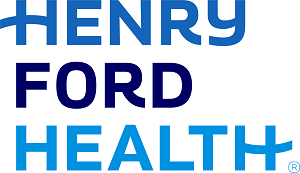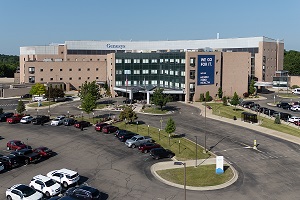Telemedicine Use During COVID-19 Shows Access Disparity Among Head and Neck Cancer Patients

DETROIT – The use of telemedicine services has shown to be exceptionally effective in meeting the health care needs of patients throughout the COVID-19 pandemic. But an analysis by Henry Ford Health System found that socioeconomic factors may affect certain patient populations on how they use the technology for accessing care.
In a Research Letter published in the Journal of the American Medical Association’s Otolaryngology – Head and Neck Surgery, Henry Ford researchers report that head and neck cancer patients who were low-income, on Medicaid or uninsured were more likely to complete a virtual visit by telephone rather than by video. They also said women with a lower median household income were less likely to complete a telemedicine visit than men in the same income bracket.


Researchers said further study was needed to explain patients’ reticence with completing a video visit, which provides a more comprehensive health care assessment than a phone call with their doctor. “While virtual care may provide a promising platform for expanded
access to care in some patients, it must be implemented in a way that it doesn’t create barriers to already disadvantaged patient populations,” said Samantha Tam, M.D., a study co-author and otolaryngologist in Henry Ford’s Department of Otolaryngology – Head and Neck Surgery.
The pandemic-driven need for accessing care using telemedicine services prompted researchers to evaluate whether socioeconomic factors impacted a patient’s ability to receive virtual care. In their retrospective study, they analyzed census-based socioeconomic data of head and neck cancer patients who had a telemedicine visit between March 17 and April 24, 2020 and compared the results to a similar cohort from the same time frame in 2019.
Data included patients’ age, sex, race, insurance status, household income, education, marital and employment status, and English-speaking households. Patient visits were categorized by virtual visits using live audio and video, visits completed by telephone only, in-person visits and no-show or canceled visits.
Data from 401 patient encounters during the 2020 study period was collected. From those numbers, 346 encounters (86.3%) were completed by 234 patients. In-person visits consisted of 87 patients (25.1%), 170 (49.1%) were virtual visits and 89 (23.6%) were telephone visits. In comparison, the 2019 study found 551 of 582 visits (94.7%) were completed by 394 patients, with no telemedicine visits completed that year.
“We know that access to smartphones and video technology is not universal but almost everyone has access to a telephone,” said Vivian Wu, M.D., a study co-author and otolaryngologist. “As virtual care expands during and after this pandemic, we must keep in mind that a phone call remains an important communication method for patients to talk to their doctor.”
Since the retrospective study was observation-based, the research team did not evaluate whether patients had access to mobile “smart” phones and internet connectivity.
###
About Henry Ford Health System
Founded in 1915 by Henry Ford himself, Henry Ford Health System is a non-profit, integrated health system committed to improving people’s lives through excellence in the science and art of healthcare and healing. Henry Ford Health System includes six hospitals including Henry Ford Hospital in Detroit; Henry Ford Macomb Hospitals; Henry Ford Wyandotte Hospital; Henry Ford West Bloomfield Hospital; Henry Ford Allegiance in Jackson, MI; and Henry Ford Kingswood Hospital – an inpatient psychiatric hospital.
Henry Ford Health System also includes Henry Ford Medical Group: Henry Ford Physician Network; more than 250 outpatient facilities; Henry Ford Pharmacy; Henry Ford OptimEyes; and other healthcare services. Our not-for-profit health plan, Health Alliance Plan – HAP – provides health coverage for more than 540,000 people.
As one of the nation’s leading academic medical centers, Henry Ford Health System trains more than 3,000 medical students, residents, and fellows annually in more than 50 accredited programs, and has trained nearly 40% of the state’s physicians. Our dedication to education and research is supported by nearly $100 million in annual grants from the National Institutes of Health and other public and private foundations.
Henry Ford Health System employs more than 33,000 people, including more than 1,600 physicians, more than 6,600 nurses and 5,000 allied health professionals. For more information, go to henryford.com.
###
MEDIA CONTACT: Sal Giacona / sgiacon1@hfhs.org / 313-421-9108
.svg?iar=0&hash=F6049510E33E4E6D8196C26CCC0A64A4)

/hfh-logo-main--white.svg?iar=0&hash=ED491CBFADFB7670FAE94559C98D7798)







